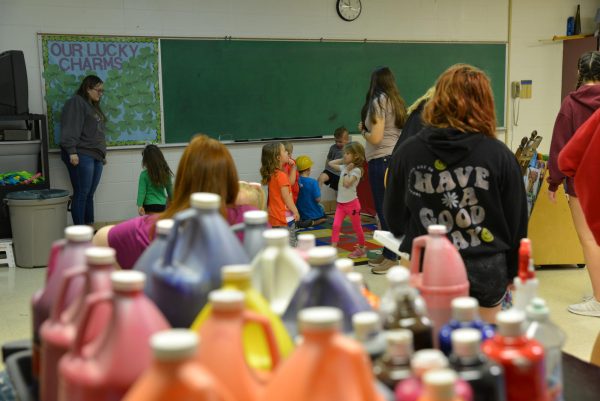Recreation on Missouri’s waters is affecting our environment
Missouri is home to a vast system of natural rivers, lakes, and streams. These waterways draw many people for recreational use such as fishing, boating, and camping. The tourism and income from this industry helps boost Missouri economically, but most people do not realize that these activities do affect the environment.
Moses Ong, the assistant manager of the trout hatchery at Meramec Springs Park, explains why the hatchery is such an integral and important part of the parks operation.
“The hatchery raises trout for anglers in the state of Missouri so that they can fish for them recreationally. They come out Meramec Springs Park and we specifically release fish into the Spring Branch for people to fish during the catch and keep season, March 1-October 31. We then release more during the catch and keep season which is from the second Friday in November until the second Monday in February,” Ong said.
The fishing industry draws in a large crowd from all over Missouri, which is why the hatchery must release more fish into the wild to accommodate the demand.
“Statewide over 250,000 anglers, or fisherman, who fish specifically for trout and 50,000 fishing trips are made here at
Meramec during catch and keep season,” Ong said.
The Meramec Springs Park hatchery does not work alone though. It is a part of a large network that replenishes the fish supply throughout the state.
“We produce, ourselves, about 100,000 fish, we also get an additional 30,000 from the Montauk hatchery near by. We are only part of a system that produces 1.5 million fish statewide,” Ong said.
Although the hatchery has mostly positive environmental impacts, it is undeniable that there are some downfalls to producing so many animals.
“Like any other concentrated animal production unit there is animal waste. The nice thing about about Meramec Springs is that we have plenty of water to dilute that. Otherwise, the only other issue we have is littering done by anglers in the Spring Branch which eventually flows down into Meramec river,” Ong said.
Overall, Ong believes that the positive impact of producing the trout outweigh the pitfalls, and that these negative environmental effects are a necessary evil so that people are able to fully enjoy the recreational use of the rivers and streams.
“In terms of an environmental benefit, there is a cost to raising fish which has to be balanced out with the recreational enjoyment of people. One might say that it is hard to measure exactly what that impact is, but we are regulated and required to make sure we are within our limits,” Ong said.
Andrew Branson, who is in charge of fishery outreach for the conservation department, also believes that if properly executed, fishing can have a positive environmental impact.
“The fishing definitely can impact fish populations and the environment, which is why we have fishing regulations. These regulations were developed to protect the environment and fish populations so as long as everyone follows the rules then it benefits the fish population and helps keep it healthy,” Branson said.
The land around the water is vitally important also, and if the vegetation is cleared or if chemicals are spread it will eventually end up affecting the rivers and streams.
“The biggest threat to the waterways are things happening on the watershed, the land up and around rivers and streams. Erosion is a huge problem that creates loose soil and with rain and runoff lots of silt and debris end up in the rivers,” Branson said.
Vegetation is often cleared around rivers and streams for farmland and roadways, but recreation has an impact as well. Campgrounds can create an unhealthy ecosystem when the watershed they are sometimes built on starts to erode and breakdown.
“One of the best things people can do to keep rivers and streams healthy is maintain a healthy shoreline. A Riparian Corridor a strip along the river and stream untouched which helps prevent erosion due to the root systems that form and help solidify the soil,” Branson said.
Branson believes that in order to have a healthy ecosystem within the waterways then we must try to keep both the water itself and the land around it in good condition.
“The more vegetation cut away from the river and stream banks the more problems are caused. People need to be mindful because this could prevent erosion and banks falling in,” Branson said.












